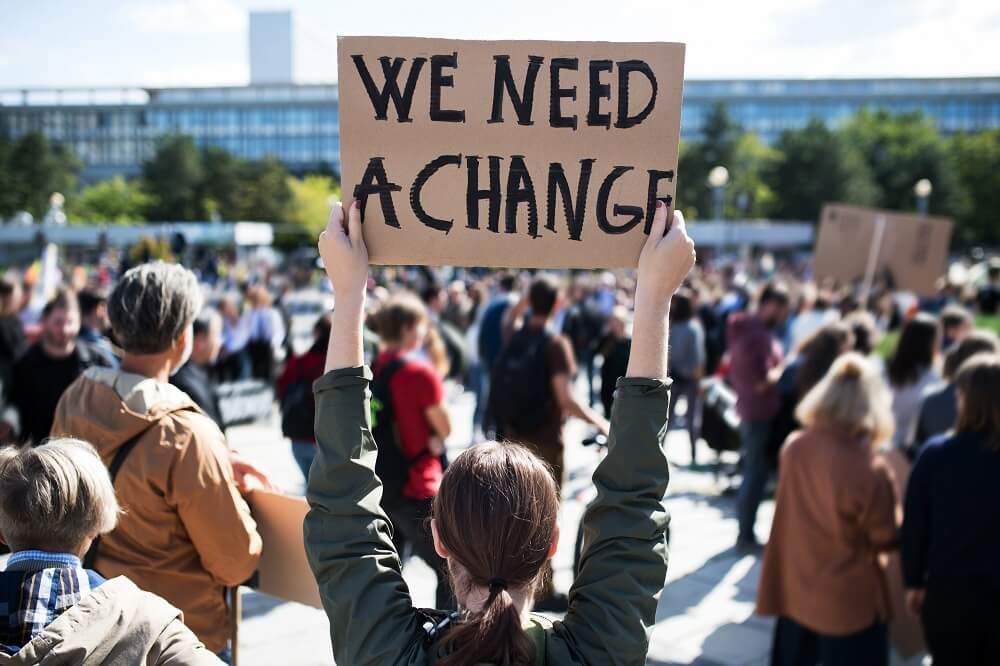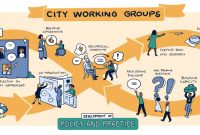Immigration advocacy and activism have played a pivotal role in shaping societal change, influencing policies, and improving the lives of immigrants. This movement encompasses diverse voices, each with unique motivations, experiences, and challenges, working collectively to advocate for a more just and equitable society.
Through various strategies and tactics, immigration advocates and activists have achieved significant victories, raising awareness, influencing public opinion, and推动ing policy changes. Their efforts have positively impacted society, leading to more inclusive policies, improved access to resources for immigrants, and a greater understanding of the challenges they face.
Advocacy and Activism Overview
Immigration advocacy and activism play a pivotal role in shaping societal change by advocating for the rights and fair treatment of immigrants. These efforts have significantly influenced immigration policies, leading to positive outcomes for immigrant communities.
One notable example of successful advocacy is the Deferred Action for Childhood Arrivals (DACA) program. Launched in 2012, DACA provides temporary protection from deportation and work permits to undocumented immigrants who arrived in the United States as children. This program was the result of sustained activism by immigrant rights organizations, who mobilized support and raised awareness about the challenges faced by young undocumented immigrants.
Voices for Change
Immigration advocacy and activism encompass a diverse array of individuals and organizations, each with unique motivations, experiences, and challenges. These voices represent a collective force for change, working to protect the rights of immigrants and advocate for fair and humane immigration policies.
Immigrant Rights Organizations
Immigrant rights organizations play a crucial role in providing legal assistance, social services, and advocacy for immigrants. They work at local, state, and national levels to address issues such as detention, deportation, and access to healthcare and education.
Community-Based Organizations
Community-based organizations (CBOs) are grassroots organizations that serve immigrant communities directly. They provide a range of services, including language classes, job training, and legal assistance. CBOs also engage in advocacy and community organizing to empower immigrants and advocate for their needs.
Faith-Based Groups
Faith-based groups are often involved in immigration advocacy and activism, guided by their religious beliefs and values. They provide humanitarian assistance, advocate for just immigration policies, and engage in interfaith dialogue to build understanding and compassion.
Individual Activists
Individual activists play a significant role in raising awareness about immigration issues, organizing protests, and lobbying for policy changes. They come from diverse backgrounds and use their voices to amplify the stories of immigrants and advocate for their rights.
Strategies and Tactics

Immigration advocates and activists employ a range of strategies and tactics to achieve their goals. These include:*
-*Public education and outreach
Raising awareness about immigration issues and the human toll of immigration policies.
-
-*Policy advocacy
Lobbying lawmakers to support legislation that protects the rights of immigrants and promotes a fair and humane immigration system.
-*Legal advocacy
Providing legal representation to immigrants facing deportation or other legal challenges.
-*Community organizing
Mobilizing immigrants and their allies to advocate for their rights and build power.
-*Direct action
Engaging in nonviolent civil disobedience to draw attention to immigration issues and demand change.
The effectiveness of these methods varies depending on the specific context and goals of the advocacy campaign. However, they have all been successful in achieving significant victories, such as the passage of the Deferred Action for Childhood Arrivals (DACA) program and the expansion of access to healthcare for undocumented immigrants.
Case Studies of Innovative Advocacy Campaigns
Some of the most innovative and groundbreaking immigration advocacy campaigns in recent years include:*
-*The “Lights for Liberty” campaign
In 2019, activists projected images of detained immigrants onto buildings and landmarks across the country to raise awareness about the human cost of the Trump administration’s immigration policies.
-
-*The “Families Belong Together” campaign
This campaign brought together a coalition of organizations to demand an end to the Trump administration’s policy of separating families at the border.
-*The “Dreamer Defense Network
This network of undocumented youth has been at the forefront of the fight for a pathway to citizenship for Dreamers.
These campaigns have demonstrated the power of grassroots organizing and creative advocacy to effect change on immigration policy.
Challenges and Obstacles
Immigration advocates and activists face a multitude of challenges and obstacles in their work to advance the rights and well-being of immigrants. These challenges stem from various factors, including political, social, and economic forces.Political factors, such as restrictive immigration policies and anti-immigrant rhetoric, create a hostile environment for advocates.
Social prejudice and discrimination against immigrants hinder their efforts to mobilize support and create change. Economic disparities and labor market competition can further exacerbate tensions and make it difficult for advocates to gain traction for their cause.
Overcoming Barriers
Despite these obstacles, immigration advocates and activists employ a range of strategies to overcome these barriers and advance their cause. They engage in grassroots organizing, building coalitions, and mobilizing communities to raise awareness and advocate for policy changes. They also use litigation and legal advocacy to challenge discriminatory practices and protect the rights of immigrants.
Additionally, advocates work to educate the public about the contributions of immigrants and dispel misconceptions and stereotypes.By employing these strategies and building alliances with diverse stakeholders, immigration advocates and activists strive to create a more just and equitable society for all immigrants.
Impact on Society

Immigration advocacy and activism have significantly impacted society, shaping public opinion, influencing policy decisions, and improving the lives of immigrants.
These efforts have raised awareness about the challenges and contributions of immigrants, fostering greater empathy and understanding within society.
Policy Changes
Advocacy campaigns have played a crucial role in influencing policy decisions. For instance, the passage of the Deferred Action for Childhood Arrivals (DACA) program in 2012 was a direct result of sustained advocacy efforts by immigrant rights organizations.
DACA provided temporary protection from deportation and work permits to undocumented immigrants who arrived in the United States as children, allowing them to pursue higher education, secure employment, and contribute to society.
Improved Living Conditions
Immigration advocacy has also led to improvements in the living conditions of immigrants. Organizations have provided legal assistance, healthcare services, and education programs, empowering immigrants to navigate complex systems and access essential resources.
Advocacy efforts have also challenged discriminatory practices and promoted policies that ensure equal access to housing, healthcare, and education for immigrants.
Economic Benefits
Immigrants contribute significantly to the economy, filling labor shortages, starting businesses, and generating tax revenue. Advocacy efforts have helped recognize and support the economic benefits of immigration, leading to policies that promote immigrant entrepreneurship and workforce integration.
Future Directions
Immigration advocacy and activism are continuously evolving fields, and the future holds both opportunities and challenges for the movement. Speculating on the future direction of immigration advocacy and activism, several emerging trends and challenges are likely to shape its course, necessitating innovative strategies to ensure continued progress and impact.
Emerging Trends
- Increased Collaboration and Coalitions: Organizations advocating for immigrant rights are increasingly recognizing the importance of forming alliances and coalitions with other social justice movements, such as those addressing racial justice, economic inequality, and climate change. This collaboration strengthens the collective voice of marginalized communities and amplifies their demands for change.
- Harnessing Technology and Data: Advancements in technology and data analytics provide new tools for immigration advocates. They can utilize data to identify patterns of discrimination, track policy changes, and mobilize supporters. Social media platforms offer powerful channels for organizing, raising awareness, and advocating for policy changes.
- Growing Focus on Intersectionality: Immigration advocacy is becoming increasingly intersectional, recognizing the multiple identities and experiences of immigrants. Advocates are addressing the unique challenges faced by undocumented immigrants, LGBTQ+ immigrants, and immigrants of color, ensuring that their specific needs are met.
Emerging Challenges
- Anti-Immigrant Sentiment and Policies: Anti-immigrant rhetoric and policies continue to pose significant challenges to immigration advocates. They must navigate a political landscape that is often hostile to immigrants and their families, requiring resilience and strategic planning.
- Limited Resources and Funding: Immigration advocacy organizations often face limited resources and funding, which can hinder their ability to effectively advocate for policy changes and provide direct services to immigrants. Securing sustainable funding streams is crucial for the movement’s long-term success.
- Burnout and Compassion Fatigue: Immigration advocates work tirelessly to support immigrants and their families, which can lead to burnout and compassion fatigue. Addressing the mental health and well-being of advocates is essential for the movement’s sustainability.
Strategies for Continued Progress and Impact
To ensure continued progress and impact, immigration advocates and activists must adopt innovative strategies, including:
- Building Power through Grassroots Organizing: Mobilizing and empowering immigrant communities through grassroots organizing is essential for building a powerful movement. Advocates must engage with immigrants, listen to their experiences, and support their leadership.
- Advocating for Comprehensive Immigration Reform: Comprehensive immigration reform remains a top priority for advocates. They must continue to push for policies that provide a pathway to citizenship for undocumented immigrants, protect immigrant families, and address the root causes of migration.
- Investing in Leadership Development: Developing the next generation of immigration advocates is crucial. Advocates must invest in training and mentorship programs to empower emerging leaders from immigrant communities.
Outcome Summary
As the future unfolds, immigration advocacy and activism will continue to evolve, facing new challenges and opportunities. By embracing innovative strategies, fostering collaboration, and amplifying diverse voices, advocates can continue to drive progress and create a more just and welcoming society for all.
Common Queries
What are the main goals of immigration advocacy and activism?
The primary goals include advocating for fair and humane immigration policies, protecting the rights of immigrants, and promoting their integration into society.
Who are the key players in immigration advocacy and activism?
Advocates include immigrant rights organizations, faith-based groups, labor unions, legal aid providers, and grassroots activists.
What are some successful examples of immigration advocacy campaigns?
Notable campaigns include the fight for the DREAM Act, the Deferred Action for Childhood Arrivals (DACA) program, and the recent efforts to provide a pathway to citizenship for undocumented immigrants.
What challenges do immigration advocates and activists face?
Challenges include political opposition, limited resources, and the complexities of the immigration system.
How can I get involved in immigration advocacy and activism?
Individuals can support organizations, attend rallies, volunteer their time, and engage in advocacy efforts through social media and other platforms.



